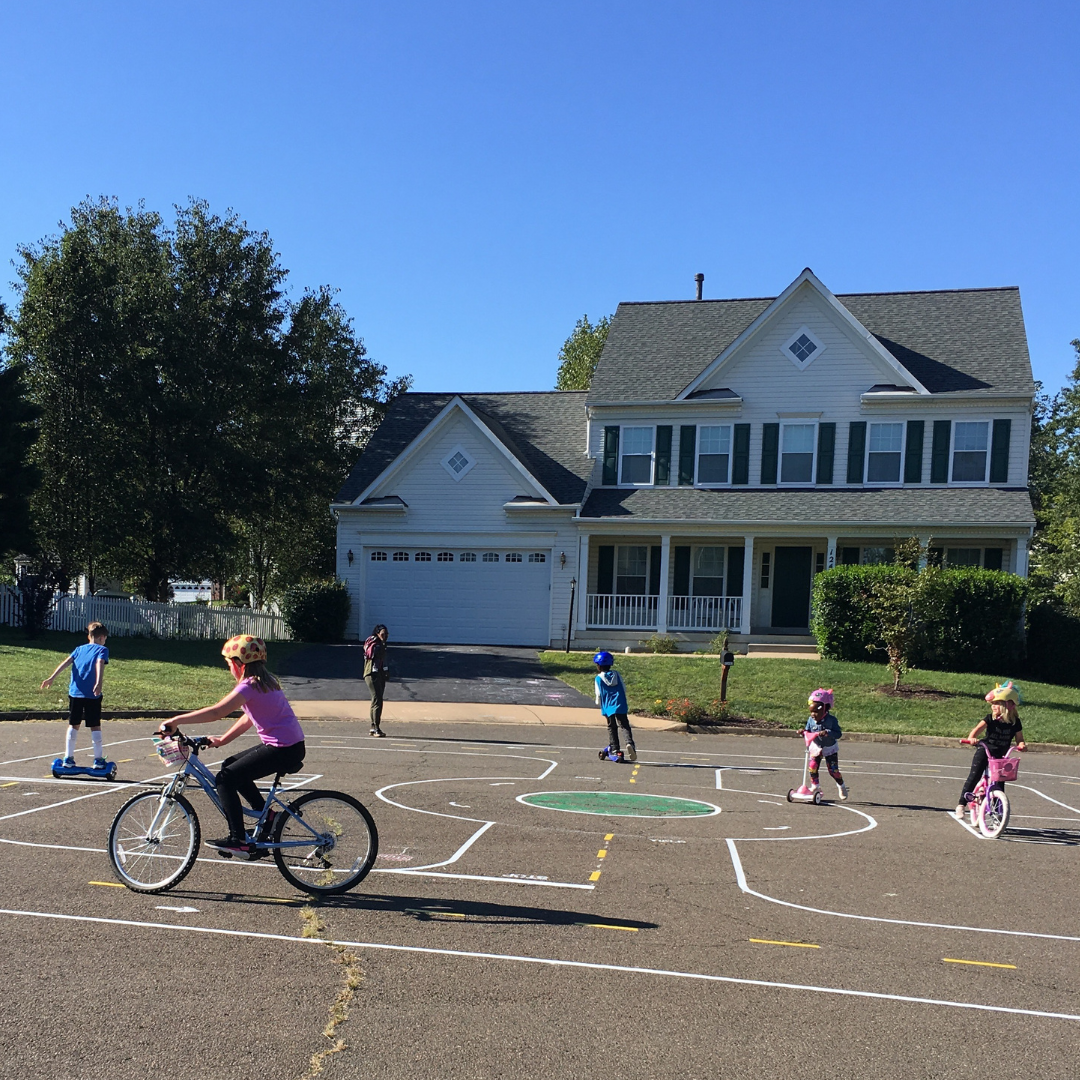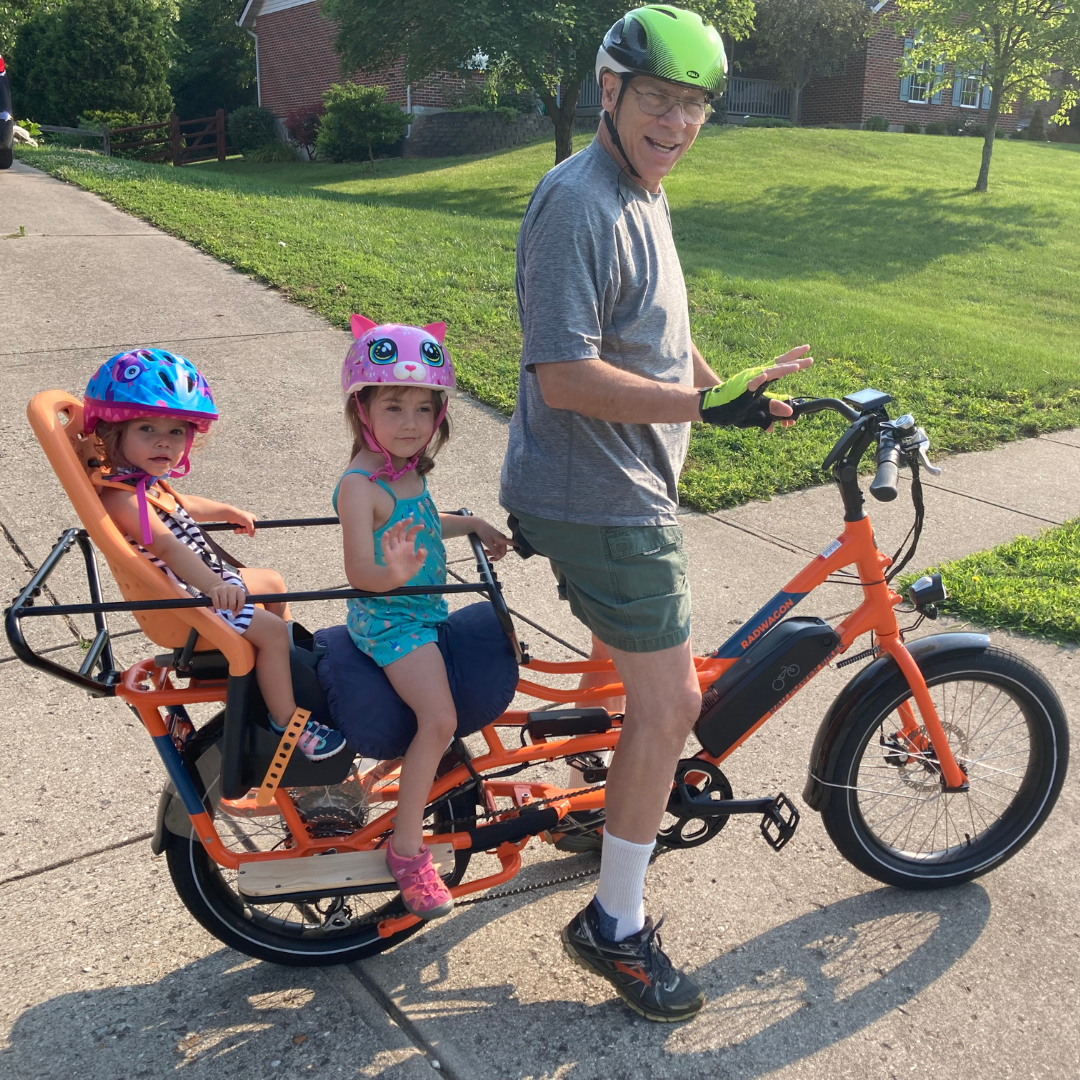DISCOVER YOUR LOCAL BICYCLING COMMUNITY
Find local advocacy groups, bike shops, instructors, clubs, classes and more!
Three Tools For Grandparents Teaching Their Grandchildren How To Ride A Bike
At the 2022 National Bike Summit, the virtual session Preparing to Ride: Developing Age-Appropriate Bicycle Education Curricula showcased the need to focus bicycle education on young children, and the associated benefits of developing and delivering quality early childhood bicycle education during the developmental stages of young children (0 – 8 years).
In this guest blog, Rick Holt, one of the virtual session’s presenters, shares the benefits of playing an active role in his grandchildren’s journey to biking and the tools that helped him along the way. Rick is also a longtime League Cycling Instructor and co-founder of the Early Childhood Mobility Coalition.
It is a thrill to be there to see your grandchildren learn how to ride a bike. There are so many satisfying aspects to the experience: being able to spend time with your grandkids, being involved in their growth and the development of a lifelong health habit, and creating memories together. It is all so fulfilling.
It’s for those reasons – and so many more – that I strongly believe more grandparents should get involved in their grandchild’s bike education! Why?
Grandparents biking with their grandchildren helps older adults meet personal health and wellness goals, while helping their grandchildren achieve CDC-recommended developmental and physical activity goals. Beyond being physically active, grandparents can experience first-hand the impact of intergenerational learning on the development of social-emotional skills and safety awareness.
For instance, after spending time reading children’s books about traffic safety with one of my granddaughters, she began to ask me questions while we were out biking together. Some of the questions she asked were, “why is that person driving so fast?” and “why is that person not stopping at the stop sign?” Hearing those questions meant that thanks to our conversations she was more aware of her surroundings and she continued to engage in conversations with me about the new concepts she had learned about traffic safety as she explored more by bike.
Children need to experience challenging play to explore boundaries and discover consequences to their actions and the actions of others sharing the road. In my own grandchildren’s journey to biking, I discovered three tools for grandparents helping their grandkids learn how to bike: balance bikes, traffic gardens and e-bikes.
Supporting your grandchild riding a balance bike, collaborating with them to build a temporary traffic garden or walking or e-biking alongside them is a wonderful way to offer a structured challenge and a way for your grandchild to try out a fun, new, activity while staying within your risk comfort zone.
Balance Bikes
I started four of my five granddaughters off on balance bikes to help them learn how to ride. While balance bikes are becoming more common since they first appeared in the US in the 1990s, most people still do not know that they are great devices for learning how to ride a bicycle (because most of us didn’t learn to ride on one!)
The benefit of balance bikes is that they have low centers of gravity and no pedals, which requires children to learn how to balance themselves and propel themselves by pushing off with their feet. In fact, researchers studying fundamental movement found that children who used balance bikes often learned how to ride a pedal bike faster than kids using training wheels. Also, the earlier that children learn how to ride a bike, the earlier they benefit from the enhanced movement skills that come from knowing how to ride a bike. For more information on balance bikes and bike education, visit kidswalkbike.com or watch this video.
Traffic Gardens
 One way I made developing bike skills a fun and engaging experience for my grandkids was by working with my neighbors, their children, my grandchildren and my wife to build a traffic garden in our neighborhood cul-de-sac. What is a traffic garden? A traffic garden is a set of small-sized streets with scaled-down traffic features and other fun elements. A traffic garden may also be known as a safety town, safety city, safety village, traffic park or one of the many other regional names.
One way I made developing bike skills a fun and engaging experience for my grandkids was by working with my neighbors, their children, my grandchildren and my wife to build a traffic garden in our neighborhood cul-de-sac. What is a traffic garden? A traffic garden is a set of small-sized streets with scaled-down traffic features and other fun elements. A traffic garden may also be known as a safety town, safety city, safety village, traffic park or one of the many other regional names.
They can be constructed with asphalt streets and concrete curbs on dedicated sites or assembled with temporary sets of markings and portable equipment in parking lots and playgrounds. What all traffic gardens have in common is that they provide real-world traffic environments for children to navigate and practice using roadways, intersections, and crossings in a safe manner free of motor vehicles.
Our cul-de-sac traffic garden, which was built during the pandemic in 2021, also provided an outdoor, socially-distanced space for other neighborhood parents and grandparents to engage in conversations with the children using the traffic garden.
E-Bikes
 The first time I headed out on a ride with my granddaughters on my new electric cargo bike, I knew instantly I was in for a treat. Pedaling along with two smiling kids and easily tackling the neighborhood hills with pedal assist made the adventure very achievable. I have biked all my life, but at my age it helps to have a little pedal assist now and then, and with e-bikes, many older adults can continue to stay active and embrace the bicycle. One of my favorite quotes is by George Bernard Shaw: “We don’t stop playing because we grow old; we grow old because we stop playing.”
The first time I headed out on a ride with my granddaughters on my new electric cargo bike, I knew instantly I was in for a treat. Pedaling along with two smiling kids and easily tackling the neighborhood hills with pedal assist made the adventure very achievable. I have biked all my life, but at my age it helps to have a little pedal assist now and then, and with e-bikes, many older adults can continue to stay active and embrace the bicycle. One of my favorite quotes is by George Bernard Shaw: “We don’t stop playing because we grow old; we grow old because we stop playing.”
E-bikes support older adults trying out biking or continuing to bike more often and longer than with an “acoustic” bike. Since biking is a great way to stay active, which is important at any age, it is important that the e-bike be included in bike education and encouragement. The League of American Bicyclists worked with AARP to expand its Smart Cycling program to include a short “Tips for Older Adults” series which provides tools for any and everyone to not only use their bike as a way to get their physical activity in, but to ride with confidence.